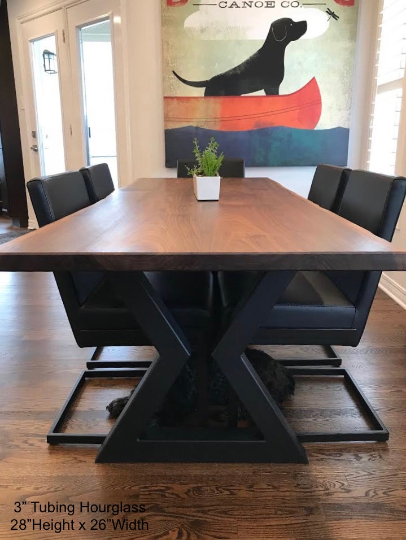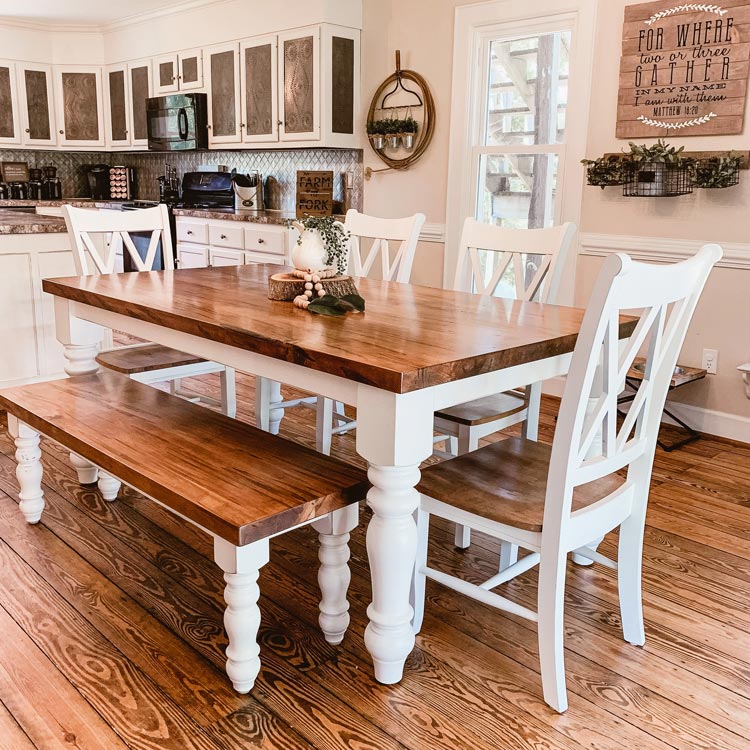From Standard to Modern: Locate the Perfect Dining-room Table Legs for Your Style
While traditional styles such as cabriole and transformed legs evoke a feeling of timeless elegance, modern designs like barrette and geometric alternatives provide a possibility for striking visual rate of interest. As you take into consideration these elements, the inquiry remains: exactly how can you perfectly integrate these varied leg styles to develop an unified eating experience?
Recognizing Table Leg Styles
The range of dining-room table leg styles can substantially influence both the aesthetic appeals and capability of the room. Each leg style contributes distinct practical attributes and visual aspects, catering to diverse style preferences and usage requirements. Comprehending these designs is essential for picking the ideal table that straightens with your overall indoor layout vision.
For instance, conical legs offer a tidy, traditional appearance that can enhance a space's elegance, while stand bases offer security and make the most of legroom, making them optimal for smaller rooms. Barrette legs, a trademark of mid-century modern style, introduce a commercial style, permitting an airy, open feeling. Trestle legs evoke rustic beauty, giving durable support and a feeling of eternity.
Furthermore, the selection of products plays a significant duty. Wood legs can bring heat and texture, whereas steel choices frequently share a streamlined, contemporary vibe. Ultimately, understanding table leg designs is vital for developing a cohesive dining location that mirrors personal design while making sure practicality and convenience. By attentively taking into consideration these aspects, you can enhance both the useful and aesthetic charm of your eating area.
Traditional Table Leg Options
When selecting dining space table legs, typical alternatives often embody timeless beauty and craftsmanship. These layouts show an abundant heritage and a commitment to top quality, making them excellent for those who appreciate traditional looks.
Among one of the most iconic conventional leg designs is the cabriole leg, defined by its elegant curved shape. This design often includes attractive makings and is most commonly found in Queen Anne and Chippendale furniture. One more prominent choice is the turned leg, which boasts a series of smooth, rounded shapes that give a timeless appearance while keeping security.
Furthermore, the straight leg, while simple, provides a basic and sturdy structure that can mix seamlessly with a selection of tabletop designs. For those drawn to ornate describing, claw-and-ball feet legs stimulate a feeling of splendour and can act as a stunning prime focus in any eating room.
Finally, stand bases, although not purely legs, offer an alternative traditional alternative that enables enough legroom and can be perfectly sculpted. Each of these conventional leg styles contributes to the general ambiance of a dining-room, marrying feature with visual appeal.

Modern Table Leg Layouts
Modern table leg designs supply a diverse range of designs that highlight ingenious materials and clean lines. These layouts typically focus on performance while working as striking prime focus within a dining room. Minimalist aesthetics prevail, with legs crafted from products such as steel, glass, and crafted wood, which contribute to a ventilated and contemporary feel.
One popular style is the barrette leg, characterized by its slender, conical structure that provides security without frustrating the table top (dining room table legs). This style is commonly found in mid-century modern furniture and can easily enhance different eating table shapes. An additional fad is making use of geometric forms, where legs may take on unbalanced or angular types, adding aesthetic rate of interest and a touch of creativity

Blending Styles for Unique Rooms
Often, home owners seek to develop special eating rooms that mirror their individual design by mixing different style elements. This technique permits the incorporation of diverse visual appeals, leading to an unified yet distinctive setting. For example, combining a rustic wooden table with sleek, modern-day metal legs can create a captivating contrast that elevates the room's overall allure.
Furthermore, integrating vintage table legs with modern table tops can evoke a sense of history while preserving a modern sensibility. Such combinations not just display specific taste however likewise urge imagination, enabling property owners to curate an area that feels both personal and welcoming.
Shade plays a critical duty in this mixing process; selecting table legs that match or contrast with the existing color pattern can improve aesthetic rate of interest. Whitewashed legs can soften the boldness of a dark table surface area, developing a well balanced aesthetic.
Tips for Choosing the Right Legs
Picking the right table legs is essential for attaining both capability and aesthetic allure in your dining room. Begin by taking into consideration the general style of your space. Traditional settings gain from legs that feature elaborate carvings or turned styles, while modern areas may require sleek, minimalist styles.
Following, assess the height and security of the legs. dining room table legs. Common eating tables range in between 28 to 30 inches in elevation, so guarantee the legs match this dimension for comfort. Additionally, robust materials, such as wood or steel, can boost stability and durability
Review the leg shape too-- options consist of directly, tapered, or pedestal designs. Straight legs provide a traditional appearance, while conical legs can add a touch of beauty. Pedestal bases supply adequate legroom and are excellent for smaller rooms.
Final Thought
In summary, choosing the optimal find here dining-room table legs needs mindful factor to consider of both standard and modern designs. Typical choices such as cabriole and transformed legs use classic style, while modern-day layouts like hairpin and geometric forms provide a contemporary touch. By integrating leg style, height, and product with the overall design, a cohesive and inviting environment can be achieved. Ultimately, the chosen table legs must show the this hyperlink wanted aesthetic, improving the dining experience within the space.
The range of dining space table leg designs can dramatically influence both the aesthetic appeals and functionality of the room. Eventually, comprehending table leg styles is necessary for developing a natural dining location that reflects personal style while making sure practicality and comfort.One of the most famous conventional leg designs is the cabriole leg, defined by its graceful curved shape. Straight legs offer a timeless look, while tapered legs can add a touch of elegance.In summary, choosing the suitable dining area table legs calls for mindful consideration of both typical and modern-day styles.